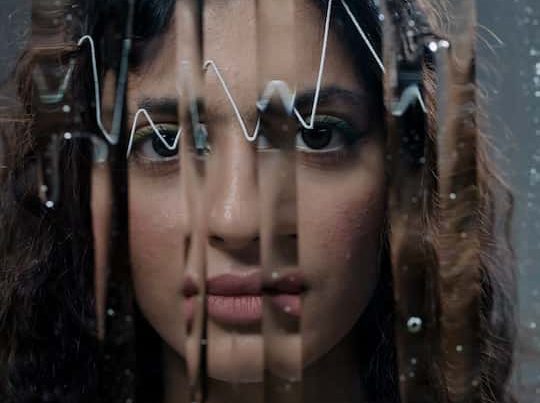My name is Mariangela and I never liked my name. The main reason is that word tastes like vanilla ice cream. And I didn’t want to be cold, pale or sweet. I would have preferred to call me Eva, which is a warm, colorful and aromatic name like cinnamon. Or maybe Irina, which is red and spicy.
It happens to me that to explain what synesthesia is, I must “crumble” a couple of words to taste them better. That’s how my brain processes it. But since many of those who read me do not relate words to the sense of taste, I will only explain their etymology.
This is not a pathology, but a subjective experience. The Spanish psychologist Matej Hochel considers it “an innate, non-disturbing and highly stable condition that occur in otherwise normal individuals. What draws the attention of lay people and professionals is that synestets report seeing ‘things’ that ‘normal’ people cannot perceive.”
Scientists still do not know the brain mechanisms of synesthesia but the main hypothesis suggests that there is a genetic component that allows some people to cross communication between neighboring areas of their brain that govern specific functions.
No poetry or ghosts
Cycling Tim form #1 (with sparkleglitch!)This is part of an ongoing side project about representing an aspect of my synesthesia, but I’ll be working it into the game, too. Would be my first animated submission if I tokenize.#synesthesia #cryptoartist #3dsmax #raredigitalart pic.twitter.com/l9kKuydRyU— Kirsten Zirngibl (@KirstenZirngibl) November 16, 2020
David Eagleman, neuroscientist at Stanford University , explained that one of the most common forms of synesthesia is grapheme-color, in which numbers, letters, days or months are mixed with colors . For example, for a person with grapheme-color synesthesia the number eight could evoke the experience of blue. But it’s not a hallucination. If a teacher writes the number eight on a blackboard with a black marker, that person will see a black eight. But inside the eight generates a bluish experience and for her eight and blue are the same, they are connected.
For example, there are people who when they taste food perceive geometric figures, or when they hear a month of the year they place it spatially, for example, to the left of their head.
The American researcher says that synesthesia is not a pathology because it does not bring disadvantages or physical problems. On the contrary, it extends the experience of those who own it and helps the memorization processes. He is convinced that all mnemonists, as they call those who possess extraordinary memories, also have synesthesia.
Meet the Twin Sister Duo with Synesthesia Superpowers for Scent Marketing https://t.co/yuITJCUz7v pic.twitter.com/kGS5DHogvR— Sara Johnson (@sarajohnson983) October 13, 2020
Russian neuropsychologist Alexander Luria, in his work Small Book of a Great Memory: The Mind of a Mnemonist, had already connected synesthesia in 1973 with the great capacity of memorization, by recounting the story of a patient who was not able to forget. That patient turned all his visual and auditory perceptions into mental images, mixed with sounds and flavors.
Most synaesthetics perceive two sensory combinations, but a person can have frequent connections with three, four, and even five senses.
Scientists have classified people with synesthesia into two groups. Those who have projective synesthesia, in which the synesthetic listens, sees, feels, smells or touches the second sensation generated by the initial stimulus. For example, when a person smells an apple, and also listens to the chord of a guitar. For that individual, the smell of apples is as real as the sound he is listening to.
The second group brings together those who have associative synesthesia. Such people feel the connection between the stimulus and the feeling that does not correspond to that stimulus. You can refer to a person who is not smelling apples, but every time he thinks about the smell of apples relates it to the sound of a guitar.
Another feature is that the synesthetic does not decide when it activates a perception or not. For example, if a woman perceives numbers as colors, whenever she sees or listens to a number she will relate it to exactly the same color or see that color projected to a specific location in the space.
Other oddities
A rare way is touch-mirror synesthesia, which consists in a person having tactile perceptions when observing others. Itmay happen to someone who is afraid of needles and who feels the puncture when they see someone else getting an injection. In the case of a synesthetic you will not only dislike the image of the needle penetrating the body of others, but it will record an exaggerated activity in its neural systems corresponding to touch when it is actually not being touched.
Another rare type of synesthesia is misophony, which was previously considered a phobia, in which a deep rejection is felt by everyday sounds such as the voices of children talking or the sound of other people’s breathing.
I’m not fortunate enough to have a fantastic memory, but no doubt, crazy brain associations help me in my daily life.
It’s hard for me to remember grammatical rules. But when I write, words form a rhythmic string that allows me to determine whether a sentence is well constructed or not. It is not about the correspondence of letters with their pronunciation. In my head every sentence corresponds to a kind of mantra in which sounds must follow an order and an intonation.
What I can attest is that this is a profoundly subjective experience. Graphic and synesthetic artist Bernadette Sheridan created a website where she shares the sequence of colors of her alphabet to show how she perceives words. Placing my name on your synesical “viewer” looks like this.

I was very funny and I don’t doubt Bernadette will look at that sequence of colors when he heard my name.
My Mariangela still tastes like vanilla ice cream. The good thing is that now I do like it.














